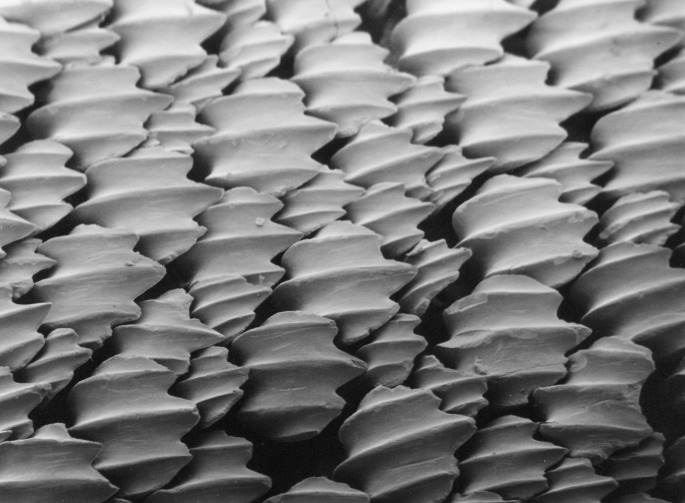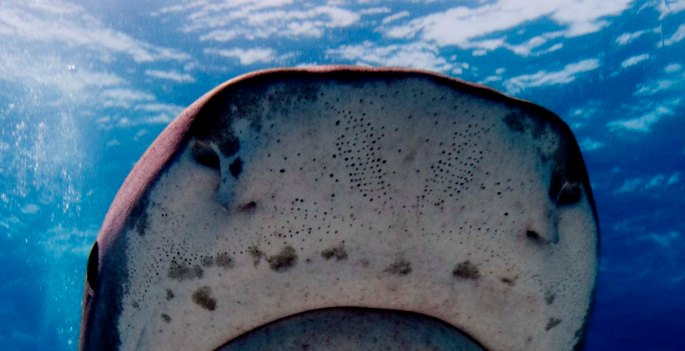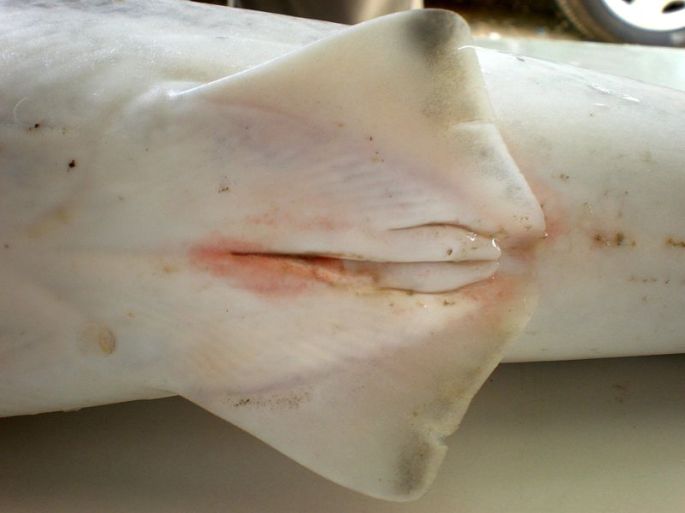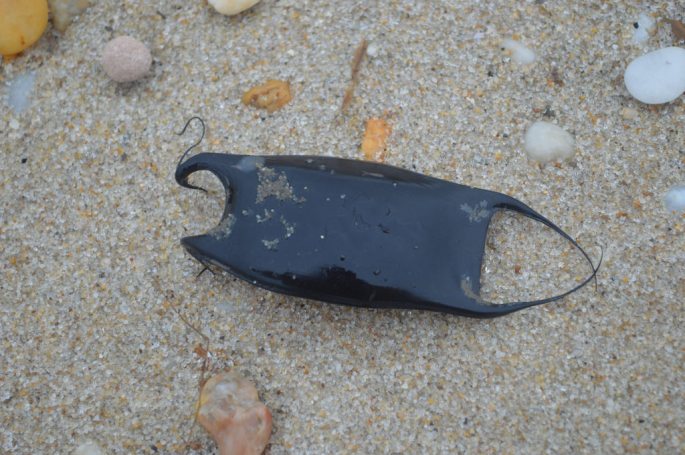What is an Elasmobranch?
Elasmobranch is a subclass of the Class Chondrichthyes: Cartilaginous Fishes, which consists of sharks, rays, skates, and chimaeras.
The subclass Elasmobranchii consists of sharks, skates and rays. About 400 species of shark and 500 species of skates and rays have been described.
The other subclass of cartilaginous fish, the Holocephali, consists of Chimaeras – ratfish (Genus Chimaera) and elephantfish (Genus Callorhynchus).
What differentiates Holocephalans and Elasmobranchs?
The main differences between these two subclasses are the structure of their gills and how they grow in the embryo. Holocephali has four gill slits with a gill cover (an operculum), while Elasmobranchs have five to seven external gill slits with no gill cover. The term Elasmobranch actually means naked gill.
Also, in the Holocephali the upper jaw is fused to the skull, unlike in the Elasmobranchii

Defining features of Elasmobranchs
- A skeleton made of cartilage
- No swim bladders
- Five to seven pairs of gills opening individually to the exterior
- Rigid dorsal fins
- Rough skin made up of small dermal denticles
- The upper jaw is not fused to the skull and they have several rows of teeth, which are continually replaced.
Evolution
- According to fossil evidence, the earliest sharks evolved about 395 million years ago.
- ‘Modern’ sharks arrived approx. 35 million years ago
- Rays and skates approx. 150 million years ago
- Chimaeras 360 million years ago

Skeleton
- Sharks, rays, skates and Chimaeras have a skeleton made of cartilage, unlike all other fish (Class Teleost: Bony fish), which have skeletons made of bone
- The upper jaw is not attached to the skull, as it is in bony fish, and can move independently of the skull
- The skull is made of only 10 cartilaginous elements, with calcified cartilage in the jaw and inner ear
- The gill slits are exposed and visible
External features
- Elasmobranch skin is made of tiny, hard, tooth-like placoid scales called denticles
- They have the same structure as teeth with an outer layer of enamel, dentine and a central pulp cavity
- Shaped like curved teeth, they make the skin a very tough armour, with a sandpaper-like texture
- Skin is so rough that contact with it can be used to injure prey
- All of the spines of the denticles point towards the tail in order to minimise drag and maximise swimming efficiency
- Their streamlined shapes helps decrease the friction of the water flowing along the shark’s body
- Fins are stiff and lack the fine bony spines and muscle control found in Teleosts. This means they are only able to swim forward

Teeth
- Elasmobranchs have polyphyodont teeth, teeth that are continually replaced as they wear out or are lost
- The teeth are arranged in parallel rows situated behind the functional set
- Those teeth waiting to replace lost lie flat against the gum and point back into the mouth where they may assist in preventing food from escaping but take no part in biting
- When a tooth needs to be replaced the gum moves forward pulling the new teeth forward and erect
- Unlike most animals’ jaws, both the elasmobranchs upper and lower jaws move
- Most species do not chew their food, but gulp it down whole it in large pieces. Their teeth are not able to chew food, but only to tear it into mouth-sized pieces
- A shark may grow and use over 20,000 teeth in its lifetime
- Each species of Elasmobranch has a different shaped tooth depending on their diet
- Rays and skates tend to eat shellfish, crustaceans, and mollusks. They have adapted sturdy and round teeth specifically for crushing the shells and exoskeletons of their prey
- Some sharks have teeth that are very sharp, wide, wedge-shaped, and have a jagged edge, designed for catching and tearing apart prey e.g. the great white shark (Carcharodon carcharias)
- Some sharks have thin, sharp, knife-like teeth designed to catch and hold slippery fish e.g. The porbeagle (Lamna nasus) only eats fish therefore it has long sharp pointed teeth that are ideal for piercing and catching fish
- The bluntnose sixgill (Hexanchus griseus) is a deep sea shark that eats mollusks, crustaceans and also fish therefore they have a mixture of sharp teeth and serrated cutting teeth
- The teeth of plankton-feeders are greatly reduced and non-functional. These sharks filter feed on prey by opening their mouths to let tiny organisms get sucked into their mouths to feed without using their teeth at all, instead filtering the food when passing water through their gills e.g. Basking sharks (Cetorhinus maximus)

Buoyancy
Bony fish have an internal organ known as the swim bladder that helps them achieve neutral buoyancy. Elasmobranchs lack this structure therefore they must rely on other methods to maintain buoyancy
- Sizeable livers – composes 25 % to 30% of the entire body mass. It is filled with a liver oil called squalene, which is less dense than water
- Fins – similar to what a bird does with its wings, elasmobranchs, using their pectoral fins create Dynamic lift. They must keep moving to enact this force. It also means that they can only swim forwards. If they need to go in the opposite direction, they turn around
- Cartilaginous skeletons – half the density of bone enabling them to float easier
- Some species gulp air from the surface to keep neutral
Senses
Elasmobranchs are renowned for their highly tuned senses, which make them incredibly successful in their environment.
Smell
- Their sense of smell is very sensitive
- Most species have large nostrils that allow a large volume of water to flow continually over their olfactory organs
Hearing
- Surprisingly, hearing is also a very important sense to elasmobranchs
- Hearing is often the first sense to detect prey at long distances
- No external ears (pinna), middle ear or Eustachian tubes
- Can hear by transmission of vibrations through the body to sensitive regions of the inner ear
Sight
- Many Elasmobranchs have very good eyesight
- Oceanic and deep-sea sharks have the largest eyes amongst elasmobranchs and rely more heavily on vision than coastal and benthic species
- They are not known to possess colour vision

Electroreception
- Most fish possess electroreceptors, which allow them to detect and locate conspecifics, predators and prey
- Many Elasmobranchs can sense electrical impulses of other animals but not generate their own special fields as they possess sensory organs called the Ampullae of Lorenzini
- They are located mainly on the head, also scattered over the body, or along the lateral line
- The sensors consist of canals of electrically conductive gel that open to the water at certain points called pits
- They are similar to lateral line receptors, a sensory organ that is a line of pressure detectors that runs down each side of the body of all fish species

Reproduction
- All elasmobranchs, unlike bony fish, practice internal fertilisation
- Females have no obvious external reproductive structures, whilst males have two extensions of the pelvic fin known as claspers. Males use these claspers during reproduction to internally fertilise the females
- Some species of shark and rays, such as the lesser-spotted dogfish (Scyliorhinus canicula), and all skates, lay egg cases, also known as Mermaid’s purses, on the seabed or wrapped around seaweed. This is called oviparity and the young develop within the egg cases whilst being nourished by a ball of yolk
- These egg cases are often found washed up on beaches and are common known as a “mermaid’s purse”
- In all other sharks and rays, the young develop inside the mother. This is known as viviparity, and the young may stay in the mother for anywhere up to two years, depending on the species
- There is no parental care in any Elasmobranch species



